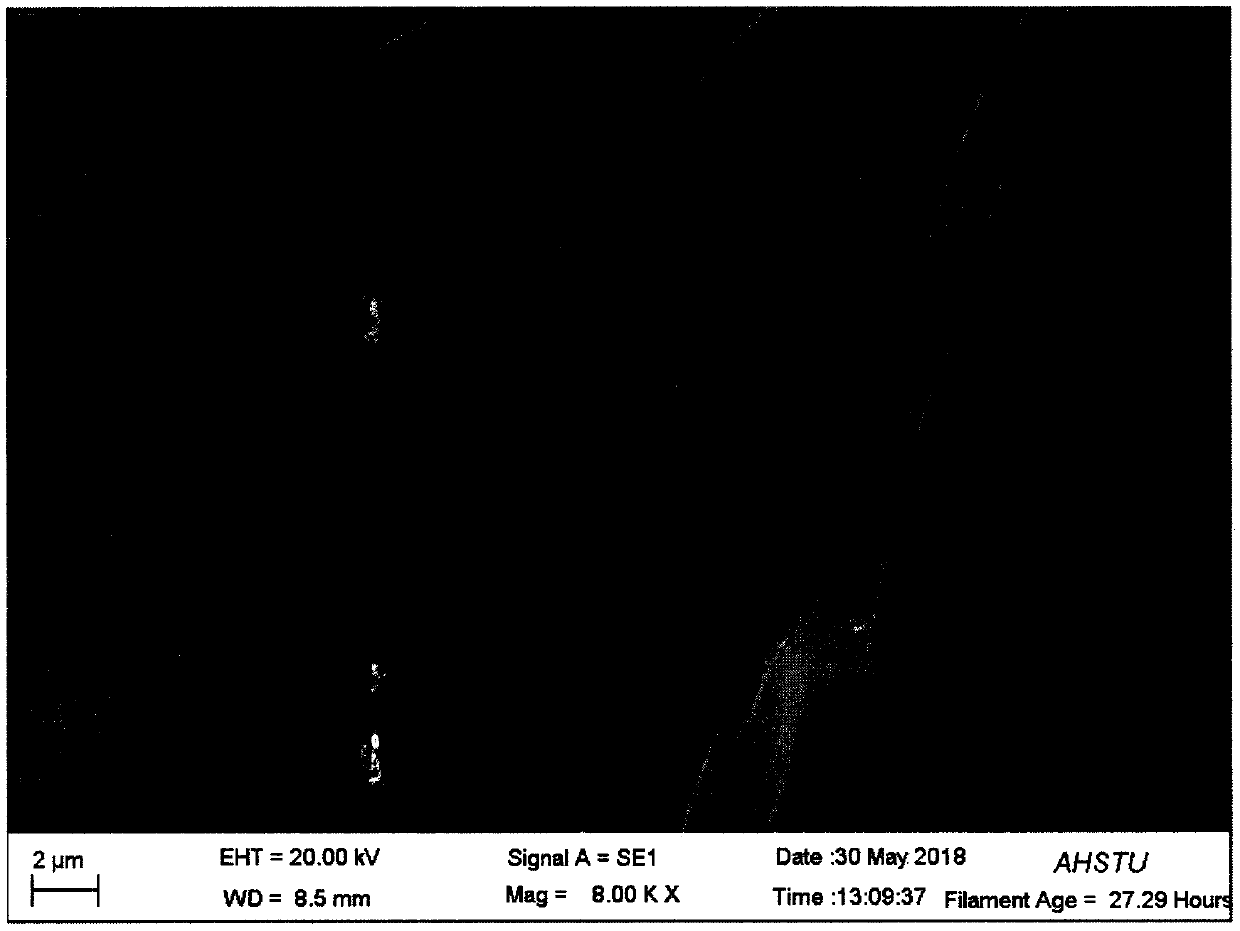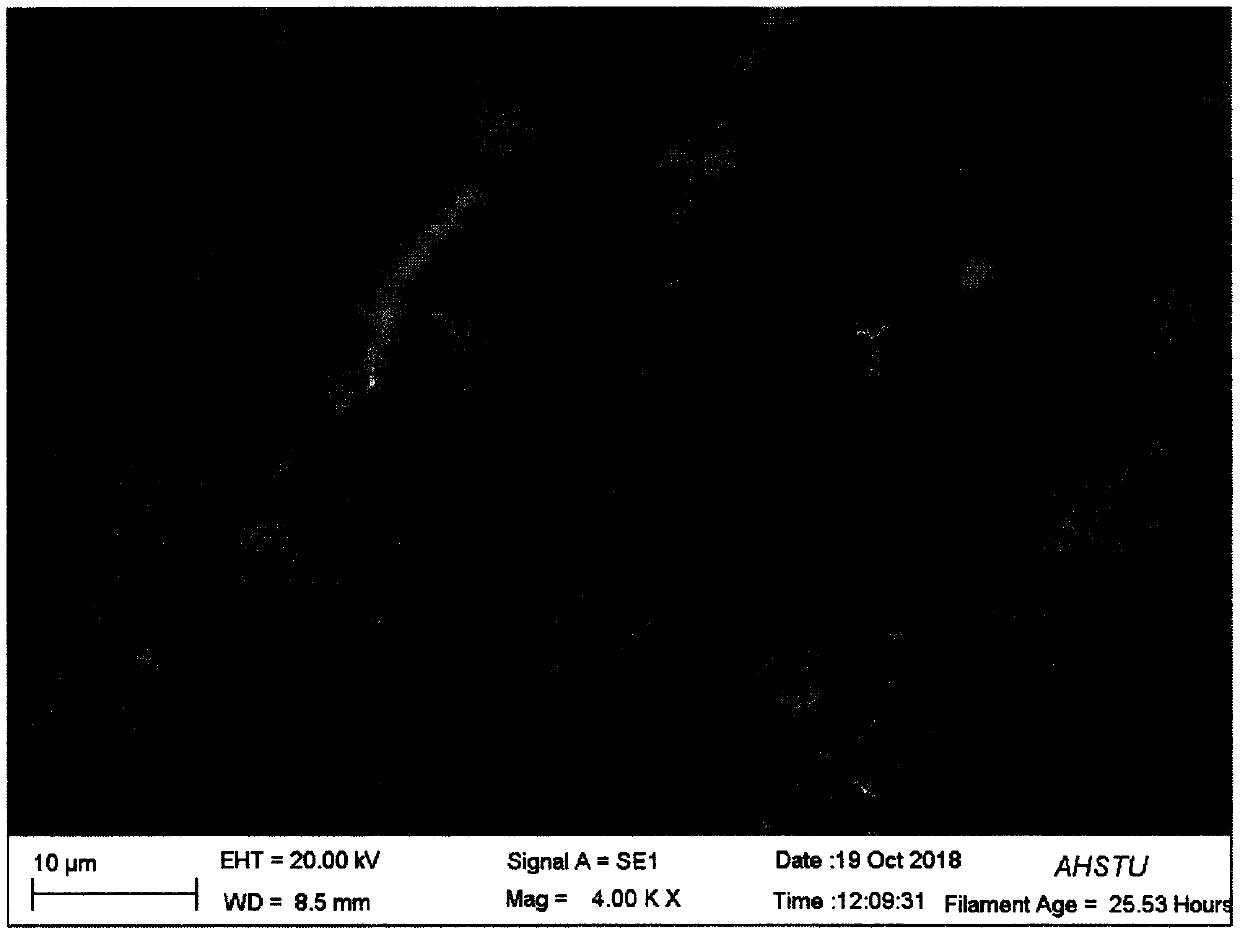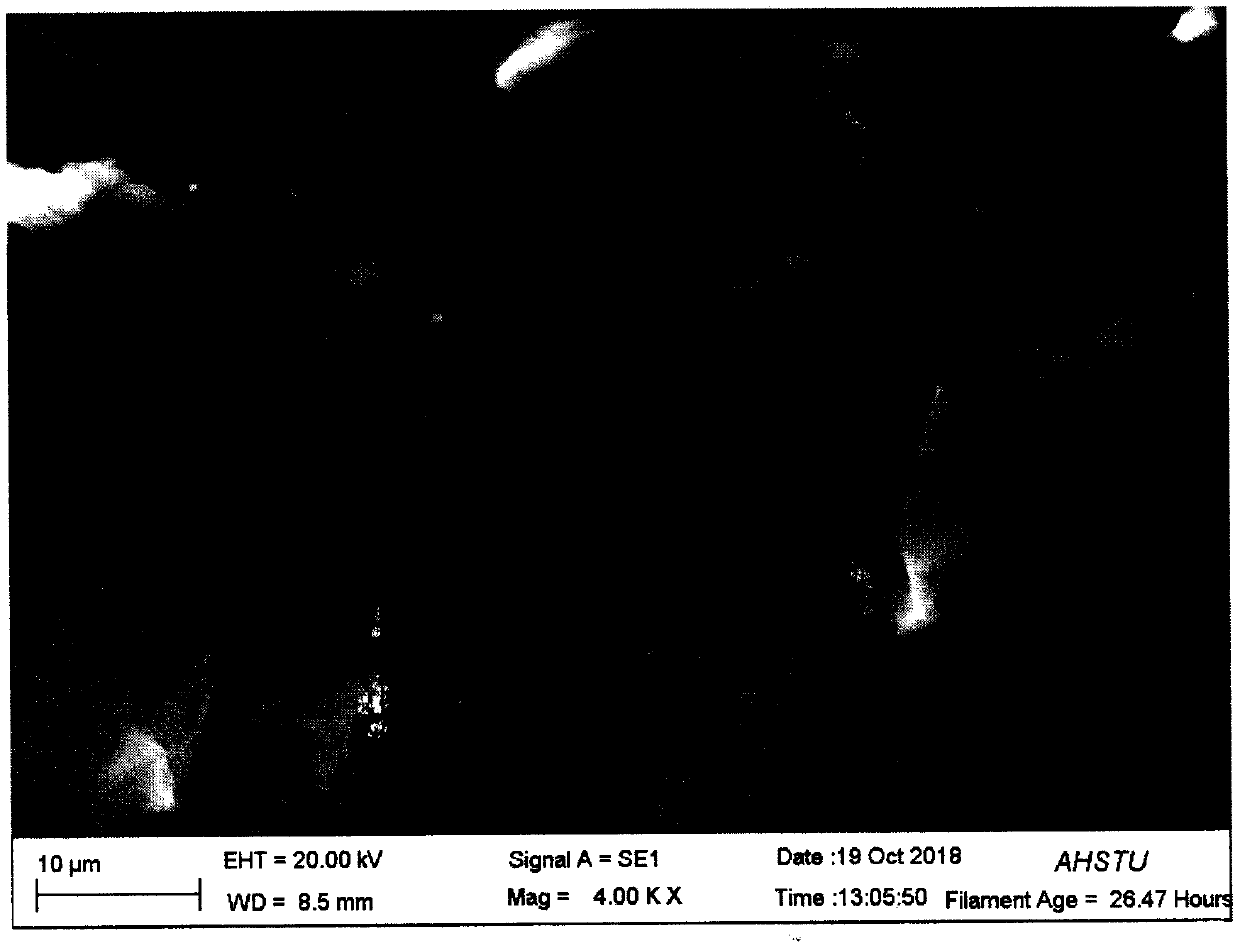Modified glassy carbon electrode for detecting dopamine and adrenaline simultaneously, preparation method and application thereof
A glassy carbon electrode and epinephrine technology, applied in the field of electrochemical analysis and detection, can solve the problems of bare electrode detection, complex pretreatment and operation steps, and few, etc., to promote electron transfer ability, increase enrichment degree, and activity The effect of many sites
- Summary
- Abstract
- Description
- Claims
- Application Information
AI Technical Summary
Problems solved by technology
Method used
Image
Examples
Embodiment 1
[0033] Comparative experiment of electrochemical response of prepared graphene oxide / eosin composite modified electrode
[0034] (1) Take four identical glassy carbon electrodes and use 0.3μM and 0.05μM Al 2 O 3 The slurry was polished on two polishing cloths for 5 minutes, and then washed with ultrapure water, followed by HNO 3 (1∶1), ethanol (1∶1), double distilled water ultrasonic treatment for 30s, then rinse with ultrapure water, and bake it under infrared light;
[0035] (2) Weigh 0.0290g of eosin and dissolve it in a 50mL beaker, stir with a glass rod until it is completely dissolved, and then transfer it to a 50mL volumetric flask. The solvents are all 0.1mol / L Na 2 HPO 4 With 0.1mol / L NaH 2 PO 4 The phosphate buffer solution is obtained by mixing the solution to pH 6.0, and finally the concentration of the eosin solution is 1*10 -3 mol / L;
[0036] (3) Weigh 2 mg of graphene oxide and disperse it in 2 mL of N,N-dimethylformamide, and sonicate it for 3 minutes with an ultrasoni...
Embodiment 2
[0040] Graphene oxide / eosin composite modified electrode method for detecting the concentration of dopamine and epinephrine in samples
[0041] S1. Prepare a series of concentration gradient standard solutions, put them into the working electrode, auxiliary electrode and reference electrode respectively, detect the electrochemical response signal on the working electrode, and obtain the DPV of different concentrations of dopamine and epinephrine standard solutions on the modified electrode 4 curve. Establishing a concentration-electrochemical response signal relationship according to the corresponding relationship between the electrochemical response signal and the concentration;
[0042] S2. Put the working electrode, auxiliary electrode and reference electrode in the solution of the test substance, and detect the electrochemical response signal on the working electrode,
[0043] The solution of each concentration was measured in parallel three times, and then corresponding to the ...
Embodiment 3
[0046] The influence of interfering substances in biological samples on dopamine
[0047] The modified electrode 4 responds to the current and a series of possible interference experiments.
[0048] After adding 30μM dopamine, the current response is obvious, and the response to L-cysteine, ascorbic acid, epinephrine, histamine, glucose, hydrogen peroxide (H 2 O 2 ), ethanol, tyramine, tryptamine and phenethylamine and other compounds have no obvious interference (signal change Figure 6A ), no current response is observed after adding these interfering substances, and the result shows that the modified electrode 4 has good selectivity.
PUM
| Property | Measurement | Unit |
|---|---|---|
| Concentration | aaaaa | aaaaa |
Abstract
Description
Claims
Application Information
 Login to View More
Login to View More - R&D
- Intellectual Property
- Life Sciences
- Materials
- Tech Scout
- Unparalleled Data Quality
- Higher Quality Content
- 60% Fewer Hallucinations
Browse by: Latest US Patents, China's latest patents, Technical Efficacy Thesaurus, Application Domain, Technology Topic, Popular Technical Reports.
© 2025 PatSnap. All rights reserved.Legal|Privacy policy|Modern Slavery Act Transparency Statement|Sitemap|About US| Contact US: help@patsnap.com



